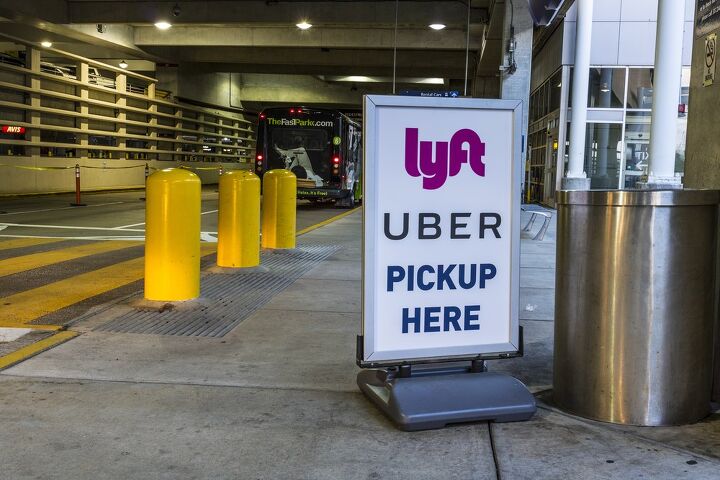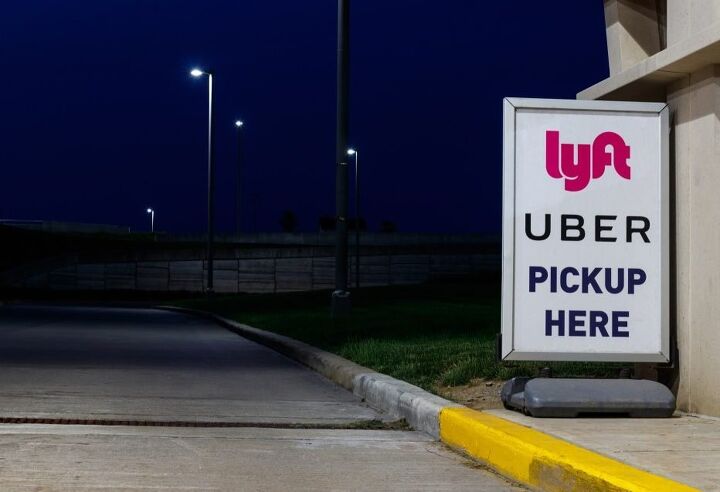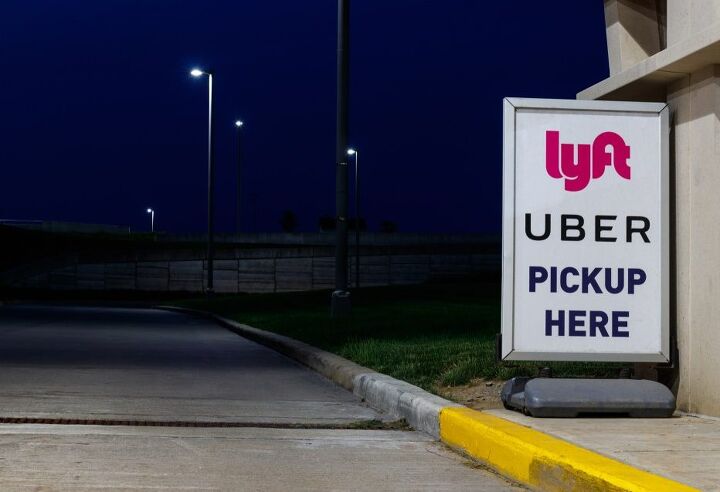#Ride-hailing
Uber Finally Makes a Profit, But Not Really
On Thursday, Uber Technologies reported its first profitable quarter since the company launched in San Francisco way back in 2009. This represents a huge achievement for the company, which has been investing heavily to expand the business in the hopes that it will eventually become the world’s favored ride-hailing, courier, and food-delivery service.
But here’s the rub. Uber is technically only profitable on an adjusted basis that takes a pretty narrow view of its finances. Despite this, it’s still a step in the right direction and may foreshadow the reliable earnings the company has been seeking for ages.
Captain Obvious Returns: Studies Say Ride-Hailing Apps Cause Pollution
As luck would have it, hiring thousands of drivers to cruise around a city in search of their next fare has some negative environmental impacts. That’s the word coming from expert researchers at Carnegie Mellon University, who we can only hope are prepared to tackle similarly impossible quandaries — like establishing what happens to an object when it’s dropped or reaching a final determination on the wetness of water.
The study is inextricably linked to one we covered in 2018 asserting that ride-hailing services actually created more traffic congestion because it treads extremely familiar ground and seems like something that we should have already figured out on our own. But it’s also at odds with the years of messaging we’ve gotten from technology firms that have promised on-demand services (like Uber or Lyft) would usher in a new era of urban transportation striving for clearer roads and cleaner air. Based on little more than the conjecture of executives, we’ve generally accepted ride-hailing as “greener” than the alternatives and it’s well past time that we started actually thinking about it.
German Startup Driving Around Autonomous Vehicle Hurdles
Despite the concept of autonomous cars suggesting a seamless, hands-free driving experience as far back as the late 1950s, only the peripheral technologies have made their way into the real world. Our ancestors would have marveled at the video displays, powertrains, and navigation systems available today. But the 21st century concept of “mobility” has also turned out to be a bit of a scam.
Formerly a catch-all term for autonomous transportation, the phrase has been redefined by the industry to pertain to subscription fees, over-the-air updates, digitally affixing your credit card information to the vehicle, and just about any present-day feature it’s interested in selling. Meanwhile, the self-driving programs that kicked off the would-be renaissance have been stagnating as companies cannot quite figure out how to teach a car to successfully assume all of the duties of a human driver. However there’s a German startup that’s attempting to circumvent those obstacles by employing digital chauffeurs working from far-off locations.
Do You Think Uber and Lyft Will Ever Be Profitable?
While the tech industry does have firms pushing useful applications and products, it’s quite possibly the most disingenuous business sector of the modern age. Companies selling literally nothing more than false promises routinely see multi-billion-dollar valuations. The necessary hardware is always just “years away” and sold to investors who haven’t realized it was never real in the first place. A significant portion of the industry is also little more than reorganizing payment structures or access to services for the sake of convivence, making sure you’re locked into a plan that keeps your financial and personal details perpetually on file. But sometimes this actually results in worthwhile solutions which may (or may not) be capable of turning a legitimate profit.
Ride-hailing firms are probably one of the earliest and best examples of all the above. Uber and Lyft both lost a lot of money in 2020 but both remain convinced that profitability is just over the next hill. But there are plenty of obstacles littering the incline.
Canadians Using Cabs to Avoid Quarantine Restrictions
With Ontario embracing some of the strictest lockdown restrictions in the West and giving the police force carte blanche when it comes to enforcing public health, many Canadians have told us they’re not exactly enthralled with the idea of notifying their government that they’ve been out of the country. This is doubly true if they’ve just flown in by plane because the nation now requires a few days’ stay in a hotel as part of its mandatory 14-day quarantine for those traveling by air.
Due to the added time, cost, and general hassle of booking yourself into a hotel for 3 nights — awaiting the results of a mandatory COVID test before you’re technically allowed to go home to continue self-isolation — some travelers have opted to utilize ground transportation for the explicit purpose of avoiding restrictions. Rather than flying all the way into the Great White North, Canadians are flying into neighboring American airports and then hailing a taxi that will take them across the border.
Uber Asks CDC to Consider Drivers Essential, Wants Early Vaccinations
On Thursday, Uber Technologies made a request with the Centers for Disease Control and Prevention (CDC) that its drivers be deemed essential and up first for the COVID-19 vaccination. While slightly presumptuous, it’s hardly the only business to make such a plea. Delivery services, the trucking industry, food producers, and more have asked the CDC to make sure their employees have first whack at being inoculated.
With lockdowns still occurring, nobody wants to be made subject to new restrictions — especially if it hampers their ability to make money. Unfortunately, estimates leave widespread vaccinations a logistical impossibility until the middle of 2021.
U.S. Government Awards Huge Transportation Contract to Uber, Lyft
The General Services Administration (GSA), responsible for managing services for federal agencies, issued a five-year federal contract to Uber and Lyft. Confirmed by Veronica Juarez, Lyft’s vice president of social enterprise and government, on Monday, the deal estimated to be worth somewhere in the neighborhood of $810 million and allows the ride-hailing firms to offer public agencies a direct line to their transportation services.
While federal employees have always been able to utilize the services, the new arrangement makes them semi-compulsory for some of the millions of government employees involved. Meanwhile, Uber and Lyft can now work directly with officials to promote their services. With the recent passing of California’s Prop 22, which issued special legal protections to ride-hailing companies, the duo seemed to be experiencing a run of good fortune late in the year. That doesn’t guarantee that they’ll suddenly become profitable entities. But they could be with sufficient government support — which seems increasingly likely for reasons we’re about to dive into.
Opinion: Uber's Reserve Program is Mildly Troubling
Uber is launching a new feature that allows riders book trips up to 30 days in advance. While supposedly innovative, it smacks of desperation following years of multi-billion-dollar losses and an inability to account for pandemic-related lockdowns. The company reported a $1 billion loss in the third quarter of 2020, noting that gross bookings declined by 10 percent year-over-year. While the assumption is that business will improve as more cities reopen, only its business-baked bookings and its increasingly popular delivery services seem to be making any headway.
Reserve, which is what Uber is calling its new booking program, seeks to be another round in its corporate magazine by allowing customers to schedule rides far in advance. But having it serve as a new revenue stream seems wishful thinking because it doesn’t appear to offer much beyond the typical Uber experience since one could already pre-book rides. What Reserve changes is how this is done. The new service adds a flat fee to booked trips that’s dependent upon location and demand.
Uber Drivers Sue, Claim Company Pressured Them to Support Prop 22
A small group of drivers are suing Uber over repetitive in-app messages from the company about Proposition 22, a ballot initiative it would very much like them to support. Considering the deluge of political messages you’re undoubtedly getting on your own cellular device, you’re probably sympathetic to their plight. There are few things more annoying than being constantly reminded about an election nobody seems capable of shutting up about — especially when they can’t seem to get your name right.
But Uber likely crossed a line with its employees. While political action campaigns can inundate you with the most obnoxious and misleading election information, your employer isn’t supposed to. These drivers are claiming Uber violated their employment rights by trying to get them to support a ballot measure it has a vested interest in every time they checked their mobile device to hunt for a fare.
California Rules Uber/Lyft Must Reclassify Drivers
A California appeals court unanimously ruled against ride-hailing giants Uber and Lyft on Thursday, mandating that they would indeed need to reclassify drivers operating within the state as employees.
The duo have been pushing against Assembly Bill 5, which seeks to reclassify contracted, gig-economy workers as fully fledged employees entitled to all the associated benefits, all year. California even sued Uber and Lyft in May for refusing to comply with with the order but they’ve claimed AB5 will severely hinder (if not eliminate) their ability to operate within the state and have backed a measure called Proposition 22 that would grant them special exceptions.
Uber, Lyft Spending Big to Fight Californian Gig Economy Laws
California Blinks: Uber/Lyft Granted Extension on New Labor Laws
The battle between the purveyors of ride-hailing apps and the State of California has been an interesting one. The West Coast’s gig economy looked ready to be nuked from orbit following the passing of Assembly Bill 5 (AB5), leaving a glassy crater of jobless part-timers and the corporations that were dependent upon them — even though the stated goal of the rule was to protect gig workers from being taken advantage of.
Uber and Lyft looked to be the most impacted by the new law, as their entire business structure revolves around managing fares for drivers whose status as “independent contractors” was up for debate.
Claiming that hiring drivers as full-fledged employees would make the existing business model untenable, Uber and Lyft suggested they were looking into alternative solutions while fighting legal battles that would effectively make them exempt from the new law. San Francisco Superior Court Judge Ethan P. Schulman threw cold water on that concept when he ruled against the duo, saying drivers were essential to ride-hailing operations and needed to be treated as regular employees receiving the full benefits they’re entitled to.
The corporations’ last hope was double down on threat to leave the state and hope a California appeals court would grant them an extension to stage another legal fight, or just comply with AB5… which is exactly what happened on Thursday afternoon.
Lyft Abandons Operations in California Following Court Decision
As Uber contemplates ways to avoid having to close up shop in California following the passing Assembly Bill 5, Lyft is simply suspending operations as it waits to see how the appeals process works out.
On Thursday, the fuchsia-themed ride-hailing firm said it would not be able to maintain business as usual in the Golden State, citing several of the reasons we prognosticated in yesterday’s article about Uber mulling a franchise model. Included in the release was an inability to hire enough drivers in a manner that would appease the new law, resulting in reduced service (especially in suburban and rural areas), and a pricing increase deemed unfeasible for existing customers if implemented.
Uber Considers Franchise Model After California Cracks Down on Contractors
California took on the gig economy by passing updated labor laws (Assembly Bill 5) mandating companies treat contractors more like regular employees. Some predicted this would be the death knell for ride-hailing firms like Uber and Lyft, who are entirely dependent on them for their daily operations. Worse still, these companies remain unprofitable despite most of the the physical expenses being pushed onto drivers — who remain responsible for the upkeep of their own vehicles after receiving their cut of the fare.
Earlier this month, Uber CEO Dara Khosrowshahi published an op-ed in The New York Times suggesting contractors deserved better, but current circumstances dictated that the situation remain largely unchanged. He later suggested the service might have to leave California as it restructured its business model to appease new rules, saying it had to reclassify drivers as employees with all the accompanying benefits (paid leave, minimum wage, unemployment insurance, etc). San Francisco Superior Court Judge Ethan P. Schulman said that would be fine last week when he ruled that Uber and Lyft drivers were essential to operations and could not be treated as tangential to the business. He wanted to be absolutely clear that exemptions would not be made for ride-hailing firms, stating that it was “high time that they face up to their responsibilities to their workers and to the public.”
Uber lost $8.5 billion in 2019, making it difficult to envision a future where it can begin offering more to its drivers. But it also doesn’t want to lose out on market share as the industry jockeys for position. There needs to be another solution.
What about moving to a franchise model?
Uber Offering COVID-19 Contract Tracing Data to Government Entities
Uber Technologies Inc. has kicked off a new service that provides public health officials immediate access to data on drivers and riders who may have been in contact with someone infected with COVID-19. Weirdly, the company decided against announcing the sharing of your whereabouts with the government with any fanfare. Perhaps they thought average people wouldn’t be interested, or maybe that broadcasting their own participatory role in crafting a nightmare dystopia could be bad for business.
Then again, maybe this is exactly the kind of mass surveillance we need to flatten the curve, stop the spread, or whatever slogan is currently the trendiest. Worried? Don’t be. Uber said this service will be offered free of charge, meaning you don’t even have to spend any additional money to have your information shared.
What a sweet deal!
























Recent Comments